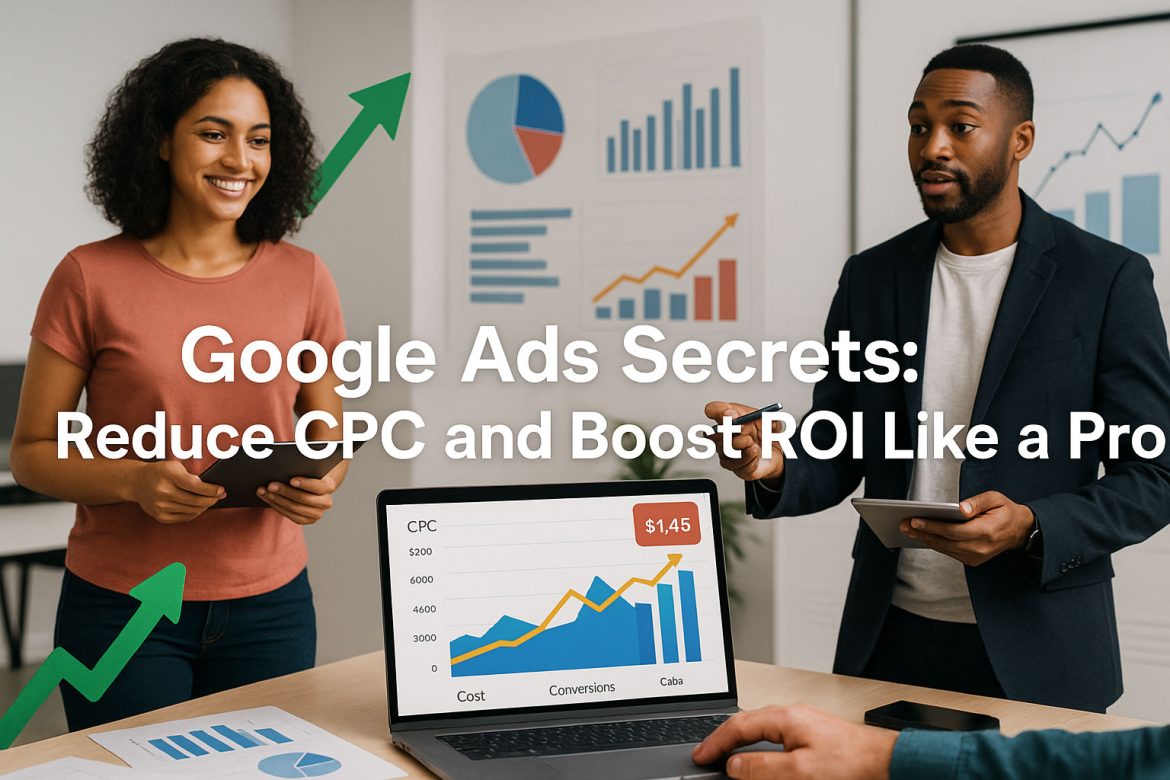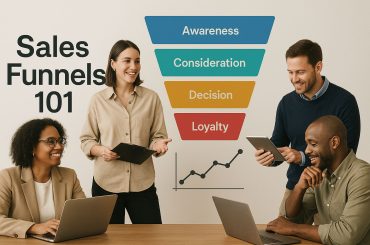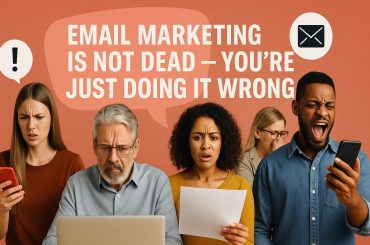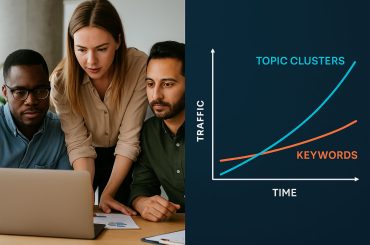INTRO: Clicks Don’t Pay the Bills
Let’s cut through the fluff.
Getting clicks on your Google Ads isn’t impressive. What matters is what those clicks cost—and what they return. If your CPC is climbing and your ROI is shrinking, you’re not running ads. You’re buying vanity.
In the Google Ads ecosystem, smart advertisers don’t spend more to win—they spend better. They test like scientists, write like copywriters, analyze like CFOs, and optimize like clockwork.
This essay is your go-to guide for reducing cost-per-click (CPC) and boosting your return on investment (ROI) like a pro. We’ll cover battle-tested techniques, hidden platform levers, psychological ad-writing strategies, and post-click conversion power moves.
Whether you’re running e-commerce, SaaS, local services, or lead gen, these insights will sharpen your edge—and your margins.
SECTION I: Stop Wasting Budget on the Wrong Clicks
The most expensive clicks aren’t always the ones with high CPCs—they’re the ones that don’t convert. That starts with targeting.
🎯 SECRET 1: Use Intent-Rich Keywords, Not Just High-Volume Ones
High-volume keywords often have ambiguous or diluted intent. You want commercial intent—terms that scream, “I’m ready to buy.”
Better Than “Running Shoes”:
- “Buy running shoes online free shipping”
- “Best long-distance running shoes men”
- “New Balance 1080 vs Brooks Ghost”
Use keyword modifiers like:
- “Buy”
- “Best [for X]”
- “Comparison”
- “Near me” (for local)
- “X alternative”
Tool Tip:
Use Google’s Search Terms Report to identify wasted spend and negative match accordingly.
SECTION II: Campaign Structure Is Half the Game
Google wants you to use “Smart Campaigns” and “Broad Match Everything.” But the pros structure accounts for maximum control.
🔧 SECRET 2: Segment Campaigns by Match Type and Intent
Run exact match keywords in separate campaigns or ad groups so you can:
- Set different bids
- Write hyper-relevant ads
- Avoid cannibalization by broad match phrases
Break your campaigns like this:
- Brand terms (exact)
- High intent non-brand (exact & phrase)
- Competitor terms (only if you can differentiate clearly)
- Broad match for research/expansion—but isolate it
SECTION III: Writing Ads That Win Clicks and Convert
The ad itself is often the most neglected piece in CPC optimization. Yet, it’s where relevance, Quality Score, and CTR begin.
✍️ SECRET 3: Copy for the Clicker’s Mindset, Not Your Product
People search because they want a result—not your feature list.
Instead of:
“Flexible marketing software for all business sizes”
Write:
“Finally—Marketing That Doesn’t Break the Bank or Your Brain.”
Or:
“Struggling with content planning? See how 12,000+ marketers fixed it.”
Your ad copy should:
- Echo the keyword in headline 1
- Present a clear benefit or outcome in headline 2
- Use description lines to pre-handle objections
- End with a CTA that feels natural (“Compare Plans,” “Get Free Demo,” “View Popular Styles”)
SECTION IV: Boost Quality Score, Drop CPC
Google rewards relevance with lower CPC. That’s not a theory—it’s the mechanism behind your Ad Rank.
🧪 SECRET 4: Match Ad Copy, Keyword, and Landing Page Flawlessly
If you’re running ads for “eco-friendly laundry detergent,” your:
- Headline should say “Eco-Friendly Laundry Detergent”
- Description should highlight eco-benefits (non-toxic, greywater safe)
- Landing page should show “eco” certifications, clean design, and testimonials
Also:
- Use SKAGs (single keyword ad groups) for surgical relevance
- Test dynamic keyword insertion carefully—it works when intent is clear
Tool Tip:
Use Google’s Ad Preview and Diagnosis tool to test how your ad shows for different queries.
SECTION V: Don’t Settle for Clicks—Optimize Post-Click
CPC is just the beginning. Even a $0.50 click is expensive if your landing page doesn’t convert.
🧭 SECRET 5: Landing Page Alignment = Conversion Multiplier
Your landing page must:
- Match the ad’s promise in headline and imagery
- Load in under 2 seconds
- Be mobile-optimized
- Include 1 clear CTA above the fold
- Address objections (FAQ, reviews, guarantees)
Use visual hierarchy:
- Headline → Hook → Proof → CTA
- Use scroll triggers and exit intent modals sparingly but smartly
Great Google Ads don’t sell. They guide. Your landing page closes the loop.
SECTION VI: Extensions Aren’t Optional—They’re ROI Levers
Ad extensions aren’t decorations—they’re functional CTR boosters.
🧩 SECRET 6: Use These Extensions Like a Pro
- Sitelinks: Add multiple conversion paths (pricing, reviews, FAQs)
- Callouts: “Free Shipping,” “100% Vegan,” “24/7 Support”
- Structured snippets: For collections or categories
- Location: Mandatory for local business
- Call: For services with high urgency intent
The more extensions, the bigger your ad footprint = more clicks = lower CPC
SECTION VII: Retarget Like You Mean It
Don’t chase cold audiences while ignoring warm ones.
🔁 SECRET 7: Segment Retargeting by Intent and Behavior
Create different ad sets for:
- Homepage visitors (low intent—use educational content)
- Product page viewers (use testimonial or comparison)
- Cart abandoners (use incentive or urgency)
Don’t repeat the same ad. Advance the conversation.
Think of retargeting like a second chance—don’t waste it saying, “Hey, remember us?”
SECTION VIII: Automate After You Master Manual
Google’s machine learning is powerful—but blind automation is budget suicide.
🤖 SECRET 8: Use Smart Bidding With Boundaries
When to use:
- Maximize conversions if you have 50+ conversions/month
- Target CPA if you know your breakeven
- Enhanced CPC if you’re scaling cautiously
Always set:
- Location controls
- Ad schedule filters
- Audience exclusions
Never “set and forget.” Let automation support, not replace, human strategy.
SECTION IX: Test Like a Scientist, Not a Gambler
Optimization isn’t about random changes. It’s about hypothesis, execution, and iteration.
🔬 SECRET 9: Run A/B Tests With Precision
Test:
- Headlines (benefit-driven vs curiosity-driven)
- Display paths (add keywords to boost relevance)
- Description lines (proof vs emotion)
- Landing pages (long vs short form)
Always isolate one variable per test. Use Google’s Experiments to maintain statistical integrity.
CRO is math + psychology. Treat it with rigor.
SECTION X: Know Your Numbers (And What Moves Them)
Running Google Ads without analytics is like sailing without a compass.
📊 SECRET 10: Build a Performance Dashboard That Tracks:
| Metric | Why It Matters |
|---|---|
| CPC | Efficiency indicator |
| CTR | Creative relevance measure |
| Quality Score | Keyword alignment health check |
| Conversion Rate | Landing page + intent match |
| ROAS or CPA | True bottom-line performance |
| Impression Share | Market dominance proxy |
Use Google Analytics 4 (GA4), Looker Studio, and native Ads reports.
FINAL WORD: The Best Google Ads Marketers Are Systems Thinkers
Winning at Google Ads isn’t about finding the perfect keyword or the cheapest click. It’s about engineering a system of relevance, clarity, testing, and feedback—where every step from search to sale is intentional.
Reduce CPC? That’s good.
Increase ROI? That’s better.
But create a system that gets smarter and more profitable over time?
That’s pro-level.
And that’s what you came here to do.




